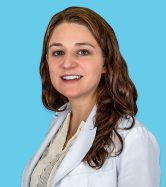
is proud to partner with

14506 W Granite Valley Dr
#205
Sun City West, AZ 85375
U.S. Dermatology Partners, formerly Beatrice Keller Clinic, proudly serves patients with skin care needs in Goodyear, Peoria, and Sun City West, Arizona.
Beatrice Keller Clinic is a full-service dermatology clinic in West Valley, Arizona. Originally established by James W. Groff, DO in 1989, our clinic was named in honor of Beatrice Keller-Groff, Dr. Groff’s late mother, without whose inspiration, love, and guidance, this dream would not have come true. Since opening our doors, we have partnered with the largest physician-owned dermatology practices in the country, U.S. Dermatology Partners. We are proud to be the leading dermatology experts throughout Arizona.
All of our West Valley dermatologists are Board-Certified by the American Academy of Dermatology. Our skin care specialists offer dermatology treatment and counseling to help preserve the health of your skin and maintain a youthful appearance. Our physicians provide medical treatment for skin cancer, as well as for a variety of diseases of the skin, hair, and nails, such as acne, psoriasis, rosacea, shingles and fungal infections. At our dermatology clinics in Arizona, the removal of benign, premalignant, or malignant lesions and cysts can very often be accomplished with an in-office procedure.
Our passion is to provide the highest quality skin care available to you – our patients. We hope to make each visit — from initial consultation to treatment to follow-up — the most convenient and comfortable experience possible. We want you to feel confident that you chose us as your dermatologist. At U.S. Dermatology Partners, you are working with doctors and other professionals who are qualified, experienced, and caring. Whether you suffer from pain, skin irritation, or if you’ve noticed a suspicious new spot or mole, we can help. Contact us to schedule an appointment at our Goodyear, Peoria, or Sun City West dermatology offices today.
For more information, call our Goodyear, Peoria, and Sun City West dermatology offices. We look forward to exceeding your expectations.
Actinic Keratosis, also known as solar keratosis, is a scaly or crusty lesion on the skin that develops slowly and indicates the presence of sun damage. It is most commonly found on parts of the body frequently exposed to the sun including the bald scalp, face, ears, lips, backs of the hands or forearms, neck, and shoulders.

Actinic keratosis improves just two days after a freezing removal treatment.
Actinic keratoses are considered precancerous and can develop into a type of skin cancer called squamous cell carcinoma. In fact, some 40 to 60 percent of squamous cell skin cancers begin as untreated actinic keratoses.
Because of this, your doctor should be diligent in diagnosing, treating and monitoring actinic keratosis.
Annual Skin Examinations are yearly scheduled skin exams with a dermatologist. Did you know that skin cancer is the most common form of cancer in the U.S.? In fact, it is estimated that one in five Americans will develop skin cancer in their lifetime. Sun damage to the skin is cumulative over a person’s lifetime, so the average risk of skin cancer also increases as our life expectancy gets longer.
Just as you schedule your annual physical or trip to the dentist, it is important to conduct a self-examination of your skin each month and schedule a professional annual skin examination once a year. Skin cancer is a treatable condition, but early detection is key.
Basal Cell Carcinoma, also known as basalioma or basal cell cancer, is the most common type of skin cancer and carries the least amount of risk, though it still requires attention. If caught and treated early, basal cell carcinomas are not likely to be life-threatening, but they do have the potential to cause disfigurement of the skin tissue.
Almost one million new cases of basal cell carcinoma are diagnosed each year in the U.S., and up to 30% of Caucasians may develop basal cell carcinomas in their lifetime.

Basal cell carcinoma can be treated by removing the affected area.
Skin cancer is considered low risk when the affected cells remain clustered in a single group. Both basal cell carcinoma and squamous cell carcinoma are rarely life-threatening. Though it is unlikely to spread to other parts of your body, if left untreated, basal cell carcinoma can move into nearby bone or other tissue.
Basal cell carcinoma typically begins as a small, shiny bump on the face, although it can occur on any part of the body.
Cryotherapy, or “cryosurgery,” is a simple, non-invasive procedure in which liquid nitrogen is used to freeze and destroy growths on the surface of the skin. This is an effective treatment for precancerous skin lesions (actinic keratoses), as well as other skin conditions such as warts, skin tags and moles.
Applying liquid nitrogen to skin lesions allows dermatologists to target the damaged skin cells and destroy them at the cellular level. After freezing, the affected area may blister and scab over, and should heal within three to six weeks.
Our dermatology team uses cryosurgery to treat a wide range of conditions. It offers a number of advantages: Cryotherapy is a simple, affordable outpatient procedure, the discomfort level is minimal, and there is a low risk of infection.
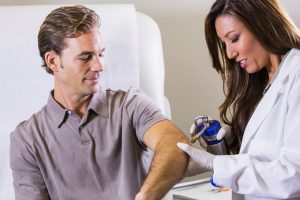
In cryotherapy treatment, liquid nitrogen is applied to the skin to freeze and destroy the affected tissue.
Melanoma, the deadliest of skin cancers, only accounts for about 4 percent of all skin cancer cases, but causes about 79 percent of skin cancer deaths.
Melanoma is a cancer of the skin that begins in the melanocytes, which are the cells that produce the pigment melanin. It is the leading cause of cancer death in women 25 to 30 years old and the second leading cause of cancer death in women 30 to 35 years old.
In some cases, melanoma occurs in melanocytes throughout the body, even if those parts have never been exposed to the sun.
Skin cancer is a common concern in the U.S. Estimates reported by the American Academy of Dermatology suggest one in five people in the U.S. will develop some form of skin cancer. Merkel cell carcinoma is among the rarest forms of skin cancer, wherein estimates by the Skin Cancer Foundation suggest that only one in 130,000 people in the U.S. will be diagnosed with Merkel cell carcinoma. Like melanoma, Merkel cell carcinoma is an aggressive form of skin cancer with a high mortality rate. As with most potentially aggressive malignancies, early detection is the best way to decrease the risk of death associated with Merkel cell carcinoma. You can learn more about diagnosis and treatment options for Merkel cell carcinoma on this page.
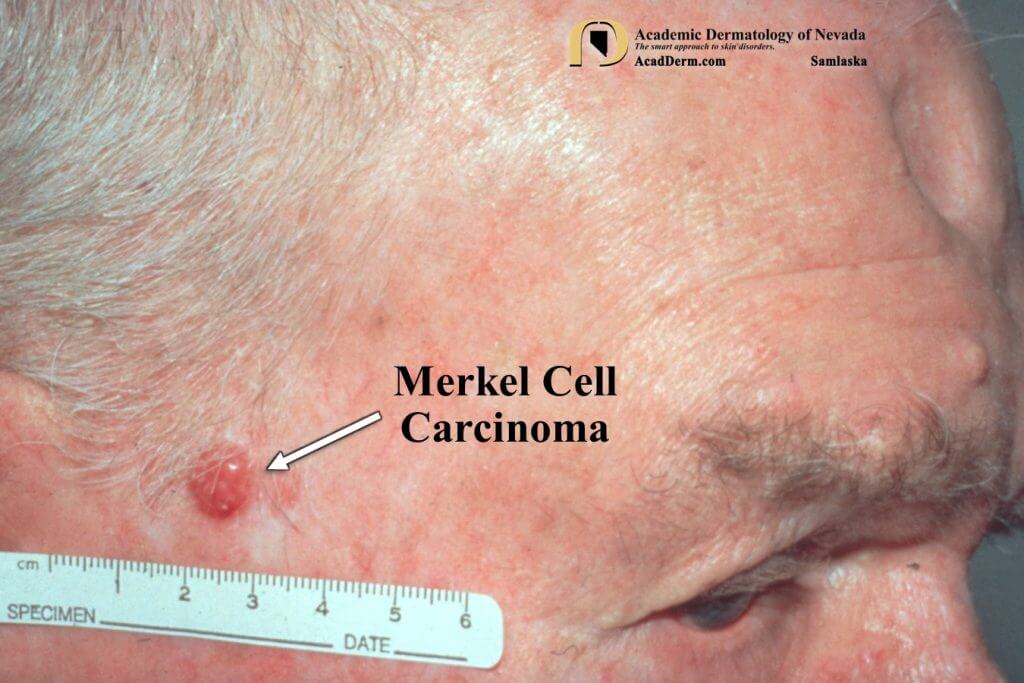
Photo Credit: Academic Dermatology of Nevada
Merkel cell carcinoma is a rare form of skin cancer that arises from Merkel cells, cells that reside deeper in the skin and function to send ‘touch’ signals from outside the skin to the inside of the body. The diagnosis of Merkel cell carcinoma is ultimately made by an assessment under the microscope after a skin biopsy has been performed. Skin biopsies are interpreted by dermatopathologists, doctors who specialize in evaluating skin under the microscope. Dermatopathologists are well equipped to make this diagnosis accurately when skin tissue is submitted in a biopsy specimen. Unfortunately, when Merkel cells become cancerous, they also become aggressive. Merkel cell carcinoma can metastasize (spread) quickly, making it one of the most aggressive types of cancer. While treatment for Merkel cell carcinoma may be successful, even with treatment Merkel cell carcinoma may evade what appears to be disease remission, and recur.
Mohs surgery offers the highest cure rates for all non-melanoma skin cancers. For certain cases of the most common types of skin cancer — squamous cell carcinoma and basal cell carcinoma — the cure rate can be as high as 99 percent.
Mohs surgery is a highly specialized surgical technique used to treat non-melanoma skin cancers in which the surgeon removes all of the visible cancer, plus a small margin of the surrounding healthy tissue and examines it to ensure that all cancer cells have been removed at the time of surgery.

The Mohs surgery technique treats skin cancers by removing all of the visible cancer. Image Source: newhealthadvisor.com
During Mohs micrographic surgery — named after Dr. Frederic Mohs, who first performed it in the 1930s — cancer is removed from the skin layer by layer until all cancerous cells have been removed. This type of surgery is most commonly used for cancers that have a high risk of re-occurrence. This technique allows for complete removal of the skin cancer while minimizing the removal of surrounding healthy skin.
A rare and aggressive form of skin cancer, sebaceous carcinoma is sometimes referred to as sebaceous gland carcinoma, sebaceous gland adenocarcinoma or meibomian gland carcinoma.
Sebaceous carcinoma can develop in any sebaceous glands, which lubricate the skin, but it most often begins on or around the eyelids. If it is found and treated early, treatment is often successful. However, if sebaceous carcinoma spreads, it can be deadly.
Because sebaceous carcinoma can appear to be a benign growth such as a stye, diagnosis is often delayed, which increases the risk of death. If you notice a growth on your eyelid, it’s important to make an appointment with your dermatologist. The sooner sebaceous carcinoma is diagnosed and treated, the better the outcome.
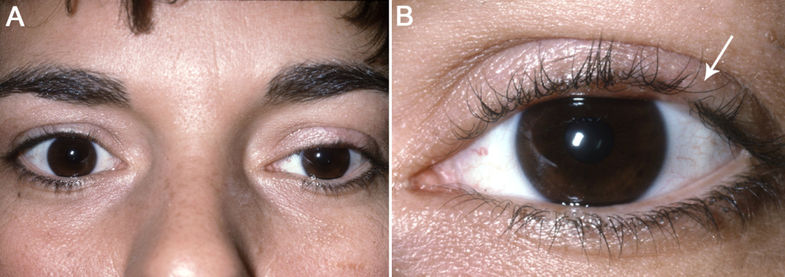
“32-year-old cosmetologist presented with 3-month history of treatment for presumed chalazion. A) The left upper eyelid showed 2 mm of ptosis with swelling. B) Focal loss of eye lashes was appreciated (arrow).” (source: “Early Onset of Sebaceous Carcinoma” by Dr. Debashis Ghosh, creative commons license)
Skin cancer is the most common form of cancer in the U.S. with more than 3.5 million cases diagnosed each year.
Skin cancer is the result of uncontrolled growth of abnormal skin cells that takes place when skin cells suffer DNA damage and then mutate, causing them to multiply rapidly and form malignant (cancerous) tumors. Most skin cancers develop on the visible outer layer of the skin (the epidermis), particularly on sun-exposed areas such as the face, head, hands, arms and legs. They are usually easy to detect with a skin examination, which increases the chances of early diagnosis.
There are different types of skin cancer, each named for the type of skin cell from which they originate. The most common type of skin cancer is basal cell carcinoma. Almost one million new cases of basal cell carcinoma are diagnosed each year in the U.S. Most skin cancers fall into one of three categories:
There are often warning signs that cancer is developing. The most common are pre-cancerous lesions called actinic keratoses that often develop on sun-exposed areas. These tumors replace normal surrounding tissue and generally do not spread to other areas.
Skin cancer is considered low risk when the affected cells remain clustered in a single group. Both basal cell carcinoma and squamous cell carcinoma are rarely life-threatening.
Skin cancer is considered a high risk when cells have invaded surrounding tissues. The third most common skin cancer, malignant melanoma, can be life-threatening if not diagnosed and treated early.
If skin cancer is detected before it has spread to surrounding tissues, the chances of a complete recovery and cure are excellent. High-risk forms of cancer like melanoma require more aggressive treatments.

Suspicious moles should be watched closely, as they might indicate a cancerous growth.
Squamous Cell Carcinoma is a common form of skin cancer that develops in the squamous cells that make up the outer layer of the skin. Although it is usually not life-threatening, it can be aggressive in some cases.
If left untreated, squamous cell carcinoma can grow large or spread to other parts of your body, causing serious complications.

Your dermatologist will be able to examine your skin for signs of squamous cell carcinoma.
Acanthosis Nigricans is a condition that causes the skin to become discolored in the creases and folds of your body. This dark colored skin sometimes becomes thickened and often shows up in the armpits, groin and the folds of the neck.
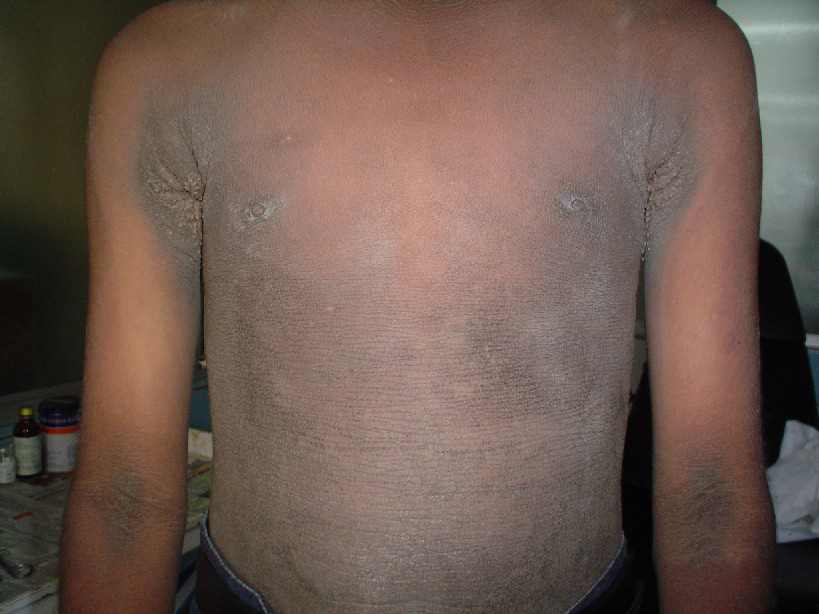
Acanthosis Nicrigans causes generalized hyperpigmentation and velvety thickening of the skin. (source)
If you’ve struggled with moderate to severe acne, including cystic or nodular acne, you know that many common acne treatments aren’t effective for everyone. Fortunately, the physicians at U.S. Dermatology Partners commonly prescribe Accutane (isotretinoin) for the treatment of those patients with acne that is unresponsive to other therapeutic options.
Acne is a dermatological condition caused by inflammation and mild infection in clogged pores. If not properly treated, acne can cause emotional distress, low self-esteem, and depression. In severe cases, it can even lead to permanent scarring.
While not a serious physical health threat, acne is an embarrassing skin problem that can be life-altering for many patients. Though it is most common among teenagers, acne can affect anyone, regardless of age or gender, and can be mild, moderate or severe.
A dermatologist may recommend allergy patch testing to pinpoint the sources of allergic skin response. These tests can help you to avoid allergens and improve your skin and overall health. You can learn more about allergy patch testing at U.S. Dermatology Partners on this page or by contacting the location nearest you to schedule a consultation with one of our knowledgeable dermatologists.
Alopecia Areata, also known as spot baldness, is a type of hair loss in which your immune system attacks hair follicles. This leads to areas of baldness on the scalp and body. In severe cases, a person with alopecia may even lose the hair of their eyebrows and eyelashes.
Athlete’s Foot earned its name because this contagious fungal infection is commonly seen in athletes, who may wear sweaty socks for long periods of activity. It affects the skin on the feet and, left untreated, can spread to toenails and even to your hands.
Related: 5 Common Foot Rashes
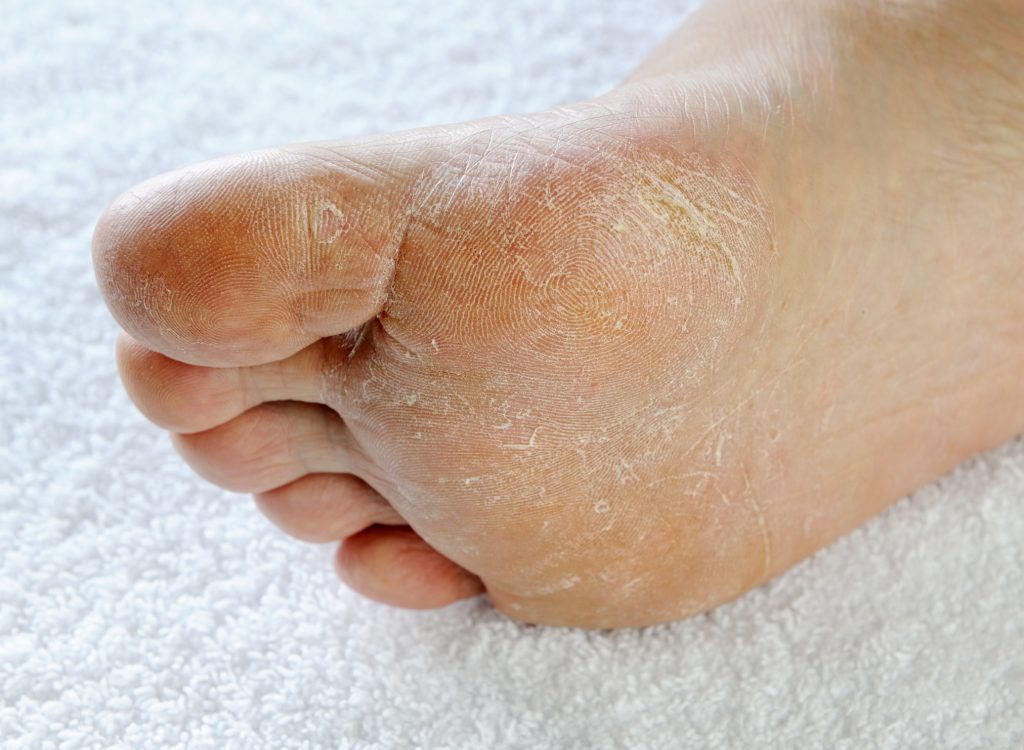
Skin affected by athlete’s foot appears crusty or scaly and is likely to itch.
If you’ve noticed new skin growths, lumps, or bumps, chances are you’re dealing with a lesion. But, to know whether or not the lesion is benign, you’ll need to consult with a professional. At U.S. Dermatology Partners, our skilled dermatologists can partner with you to determine the type of lesion and help you decide if treatment is necessary for your condition. To get started, simply fill out our online scheduling request form, and a U.S. Dermatology Partners team member will be in touch to finalize the details of your visit.
Benign lesion is an umbrella term that may reference any number of non-cancerous lesions of the skin. These lesions may develop on any part of the body with soft tissue. They are classified (named) according to their specific sets of features, where they develop, and other characteristics. Determining if a lesion is non-cancerous requires an accurate diagnosis from a dermatologist.
Cold sores, which are also called fever blisters, are groups of blisters that appear on the lip and around the mouth. The blisters may break open and leak a clear fluid and then scab over. They may take up to two weeks to heal. They are caused by the herpes (HSV) virus.
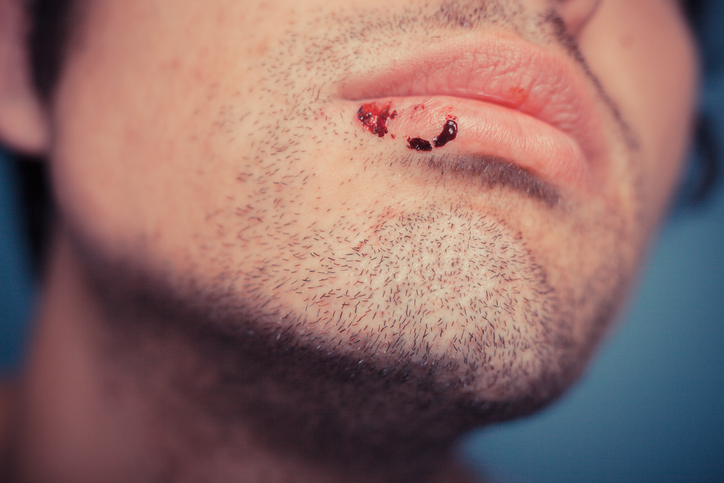
Cold sores can be uncomfortable and embarrassing.
Contact dermatitis is a common skin condition that impacts millions of people. At U.S. Dermatology Partners, we can help patients who struggle with contact dermatitis and other skin conditions to address their symptoms and look and feel their best. You can learn more about contact dermatitis on this page or by scheduling a consultation with a U.S. Dermatology Partners office location in your area.
Cysts are pockets of tissue (sacs) that may become filled with pus, fluids, skin cells, and even air.
They are fairly common on the skin and can appear anywhere on the body. Cysts may feel like a pea under the surface of the skin, but without removal, they can grow significantly larger over time. In most cases, cysts are not painful, and they grow slowly. There are different types of cysts as we’ll discuss in the next section, and the vast majority of these skin growths are benign (not cancerous). Not all cysts will require treatment, but it is vitally important to have any lump under the skin evaluated and diagnosed by a board-certified dermatologist because some soft tissue malignancies (growths that are cancerous) can present like a cyst. Before recommending removal or other cyst treatments, your dermatologist will examine the growth to determine whether it is likely to cause you pain, become infected, or otherwise lead to skin health issues.

Skin cysts, which can appear anywhere on the body, are usually painless and grow slowly.
Dandruff is a condition of the scalp which causes flaking and itching of the skin. It is more common in people with the skin conditions seborrheic dermatitis, psoriasis and eczema, and also can be a reaction to hair or skin products.
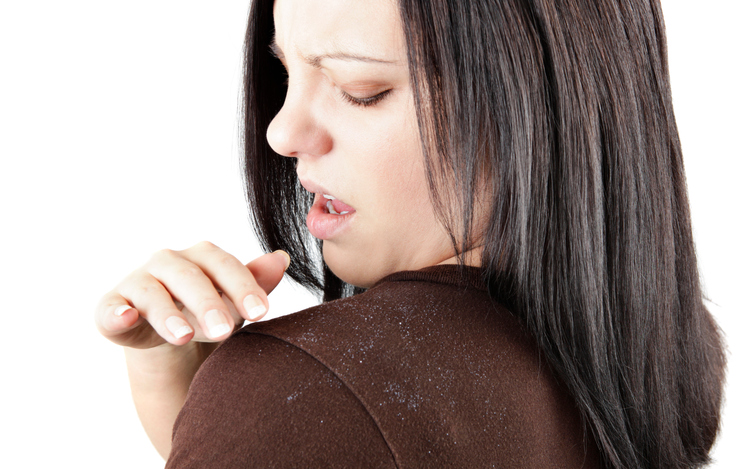
Dandruff flakes can be visible on the shoulders.
Dermatitis, also sometimes referred to as eczema, is a common condition characterized by an itchy rash and inflamed skin. There are many different types of dermatitis and symptoms can range in severity from mild itching and redness to severe blistering and cracked skin.
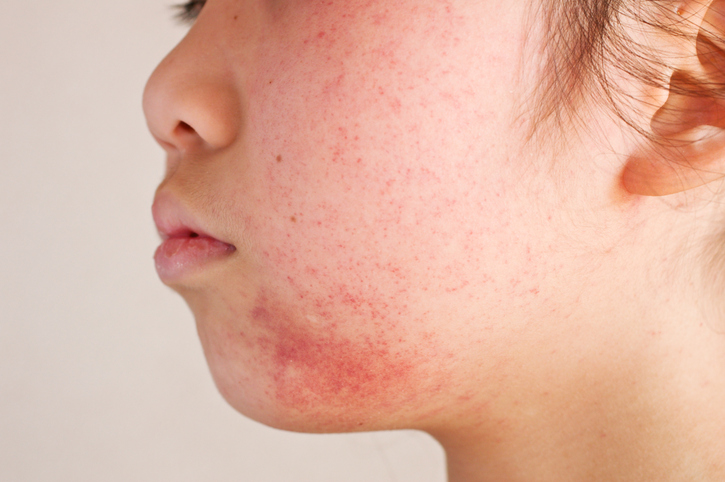
Dermatitis is a group of diseases and comes in many forms, but all are characterized by inflammation of the skin, redness and itchiness.
Eczema, also sometimes referred to as dermatitis, is a common condition characterized by a certain type of inflammation in the skin. There are many different types of eczema and symptoms can range from mild itching and redness to severe blistering and cracked skin. Whether you’re newly diagnosed with eczema or you’ve struggled with this chronic skin condition for years, you know that finding a treatment that works for you isn’t just important – it’s essential. Without proper and effective interventions, people with eczema can experience significant discomfort, itching, and inflammation.
At U.S. Dermatology Partners, our knowledgeable dermatologists partner with their patients to develop and maintain an effective eczema maintenance plan and provide advanced treatments for serious flareups. Learn more on this page or contact U.S. Dermatology Partners to get started working with us today.
Epidermoid cysts are the most common type of cyst. They are normally benign and do not typically cause any serious health concerns. However, if epidermoid cysts are in an unfortunate spot or they’re painful, infected, or inflamed, your dermatologist, at U.S. Dermatology Partners, may recommend treatment. You can learn more about epidermoid cysts on this page or by getting in touch to schedule a visit. You can get started by completing our simple online scheduling form whenever you’re ready.
A fungal infection is an inflammatory condition that is caused by fungus. Fungal infections can appear in many parts of the body and include athlete’s foot, yeast infections, skin and nail infections and more.
Related: 5 Common Foot Rashes
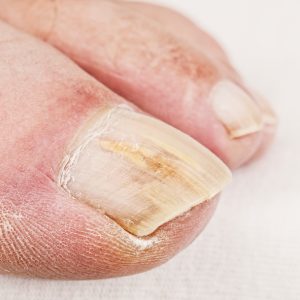
Toenail fungus can infect the toenails.
You might ask, what does hair loss have to do with skin?
Hair is actually a protein filament that grows from follicles deep in the skin up through the top layer of your skin. Your hair helps to regulate body temperature and also serves to protect your scalp. Almost everyone experiences some degree of hair loss at some point in life.
Head lice is a common condition, especially among children. While it may sound creepy or embarrassing to have small mites (or nits) in your hair, it’s actually a very manageable condition that is typically easy to treat right at home. On this page, you can learn more about how to get rid of lice from your head and your home.
Herpes simplex virus, often referred to simply as HSV, is an extremely common viral infection impacting millions of people in the U.S. alone. While there’s no known cure for HSV, some treatments have proven effective in minimizing the number and severity of flare-ups. You can learn more about HSV, its symptoms, and treatment options on this page. You can also work with one of the knowledgeable professionals at U.S. Dermatology Partners to create a treatment plan. To get started, simply complete our online scheduling request form. One of our team members will be in touch soon to finalize the details of your treatment plan.
Hidradenitis suppurativa is rare skin condition in which small, painful lumps develop under the skin, usually in areas where the skin rubs together (armpits, groin, between the buttocks, under the breasts, etc.) or in areas near hair follicles where many oil and sweat glands are present. Sometimes, the lumps may break open and smell, or they may create tunnels under the skin.
It can continue for many years, may worsen over time and can have serious effects on your daily life and emotional well-being, particularly during outbreaks.

If left untreated, Hidradenitis suppurativa can cause longstanding problems in your day-to-day life.
If you’re dealing with the itchy, inflamed, painful skin condition called hives, it may be time to call U.S. Dermatology Partners for help. Hives can be very uncomfortable, but recognizing the warning signs and taking appropriate actions to care for your skin can be important to quickly relieve these symptoms and get back to feeling your best. Keep reading to learn more about what causes hives and how your dermatologist can treat this condition.
Hyperhidrosis, often referred to as excessive sweating, occurs when people experience disproportionate and/or unnecessary sweat production. While sweating is a natural function of the body’s systems to keep itself cool and maintain the best temperature, sweating too much or sweating that is not necessary to cool the body can create many difficulties that impact your overall health and wellbeing. Generalized hyperhidrosis may affect the whole body. Others have localized cases of excessive sweating that impact only certain areas. Specifically, there are three main types of localized hyperhidrosis: axillary (impacting the underarms), palmar (impacting the palms), and plantar (impacting the feet). If you experience general or localized excessive sweating at least once per week, you should talk to a dermatologist about a treatment plan.

There are three main types of localized hyperhidrosis: axillary (impacting the underarms), palmar (impacting the palms), and plantar (impacting the feet).
A lipoma is a benign fatty growth, most often located in the deep aspect of the skin (subcutaneous tissue). These growths arise from the normal fat cells in our subcutaneous tissue and are benign (non-cancerous). However, there is a very rare form of cancer called liposarcoma, which is a malignant growth from these fat cells. Lipomas are relatively common, impacting about 1% of people. However, researchers suspect that lipoma incidence is significantly underreported.
Melasma is a fairly common skin condition that creates the appearance of brown to gray-brown patches of skin, usually on the face. It can also occur on the neck and forearms and is the result of the body producing too much melanin, that natural substance that colors our hair, skin, and eyes.
If you’re dealing with dark spots or patches on your skin from the chronic condition melasma, the U.S. Dermatology Partners team can help you to improve the appearance of these spots and minimize the risk for future flare-ups of the condition. Read the page below to learn more or reach out to the U.S. Dermatology Partners location nearest you for more information.
Milia is a commonly occurring skin condition that causes small bumps on the skin, and while these bumps may be irritating, the skin condition is harmless. You can learn more about milia, how it’s treated, and when to visit your dermatologist for help managing this skin condition on this page. If you have questions or want to schedule an appointment at U.S. Dermatology Partners, we invite you to take a few moments to complete our simple online request form.
Atypical moles, also known as dysplastic nevi, are unusual-looking benign (noncancerous) moles.
A dysplastic mole is one that, when viewed on a cellular level, has features unlike those of a healthy, benign mole. A benign mole will have a regular pattern of coloration and pigment, even borders, symmetry, and a tan or pink color. Dysplastic moles can be asymmetric, have indistinct borders, or contain multiple colors or very dark pigment.
Dysplastic moles are often spotted as the “ugly duckling” on a patient’s skin. Any departure from the typical mole a person’s skin makes may be dysplastic. They can appear anywhere on the body, but in most cases are found on the back, chest, buttocks, breasts, or scalp.

People with atypical moles are at a higher risk of developing melanoma.
Molluscum contagiosum is a contagious skin disease that appears as pink or flesh-colored bumps on the skin. It is caused by skin-to-skin contact as well as from sharing towels, clothing or touching infected surfaces. It can also be acquired through sexual contact.
For adults, bumps are most often found on the face, neck, armpits, arms and hands. They may also appear on the genitals, abdomen and inner thighs.
Once you are infected with the virus, it can spread to other parts the body, especially if you pick or scratch at the bumps or touch other parts of your skin after touching the bumps. (This is called self-re-infection.)
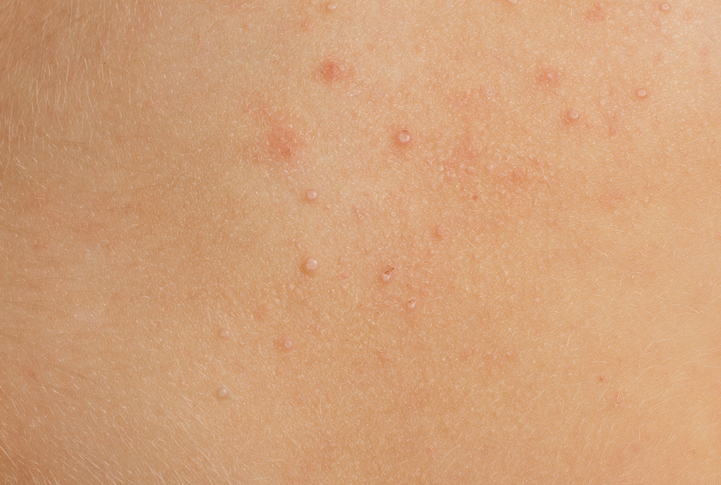
Molluscum contagiosum is a contagious skin disease that appears as pink or flesh-colored bumps on the skin.
A fungal infection of the toenails or fingernails typically looks like white or yellowed nails that may also be thick and brittle. The infection could affect one nail or part of a nail, or it could affect multiple nails. If left untreated, fungal infections can lead to permanent nail damage.
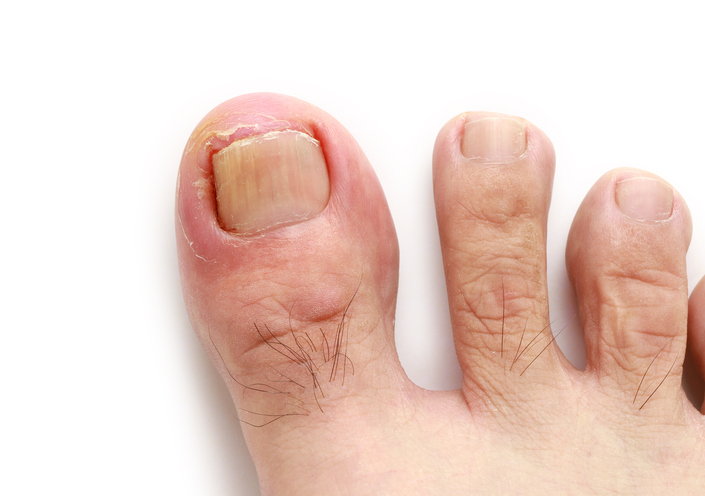
Fungal infections of the nails lead to white or yellowing nails that can be thick or brittle.
Telemedicine, also known as online dermatology, telehealth, or teledermatology, is the use of telecommunications technology to provide care across a distance. This includes using the Internet, cell phones, SMS messaging and even satellites to allow physicians and patients to communicate medical information. This technology has been available for over a decade now, but as it has gotten better and better, telemedicine has now become much more available, easy to use, and secure. If used in the right way, it is one of the best ways that we can improve access to care.
Because dermatology is a very visual field and a specialty in high demand, patient access is often challenged by long wait times. Meeting a dermatologist online can be a great way to provide patients with increased access to skin care. Teledermatology involves the use of real-time video streaming, or more commonly the transmission of still images, pictures, and video in combination with a patient’s medical information collected via questionnaire. Teledermatology can be utilized in many ways including physician-to-physician consultations, triage, follow-up care, and patient education.
When your child develops a persistent rash or other skin condition, your goal is to find the appropriate treatment as quickly as possible to keep them comfortable and healthy. Pediatric dermatology is designed to meet the special needs of children with such conditions as birthmarks, psoriasis, warts, eczema and other skin disorders.

Pediatric dermatologist examining an infant.
Photodynamic Therapy, often referred to simply as PDT, is a medical treatment that uses photosensitizing agents and light exposure to treat a range of conditions, including skin cancers, acne, and actinic keratosis (“pre-cancers”). You can learn more about photodynamic therapy on this page, and the U.S. Dermatology Partners team would love to hear from you if you’re interested in scheduling a consultation to discuss photodynamic therapy. Simply use our online request form to schedule a consultation visit at the U.S. Dermatology Partners office closest to you.
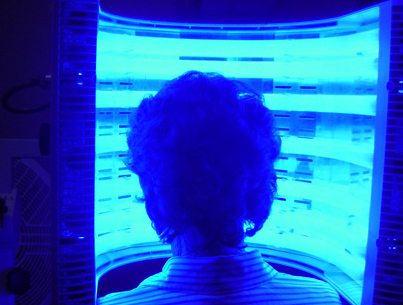
Image Source: MedicineNet.com
Psoriasis is a chronic autoimmune inflammatory condition that causes patches of skin to become red, inflamed, and bumpy. This disease affects more than 8 million people in the U.S.
Psoriasis occurs when the immune system mistakes skin cells for a virus or other infection and responds by producing more skin cell growth. This can be triggered by stress, anxiety, injuries to the skin, infections and hormonal changes.
Despite the name, ringworm is not caused by worms; it is a skin infection caused by a fungus. It can be caused by touching another person who has the infection, or by sharing items that the person has been in contact — such as towels, bedding, chairs and clothes. It can also be caught from animals with fungal infections and, rarely, from contact with fungi in the soil.
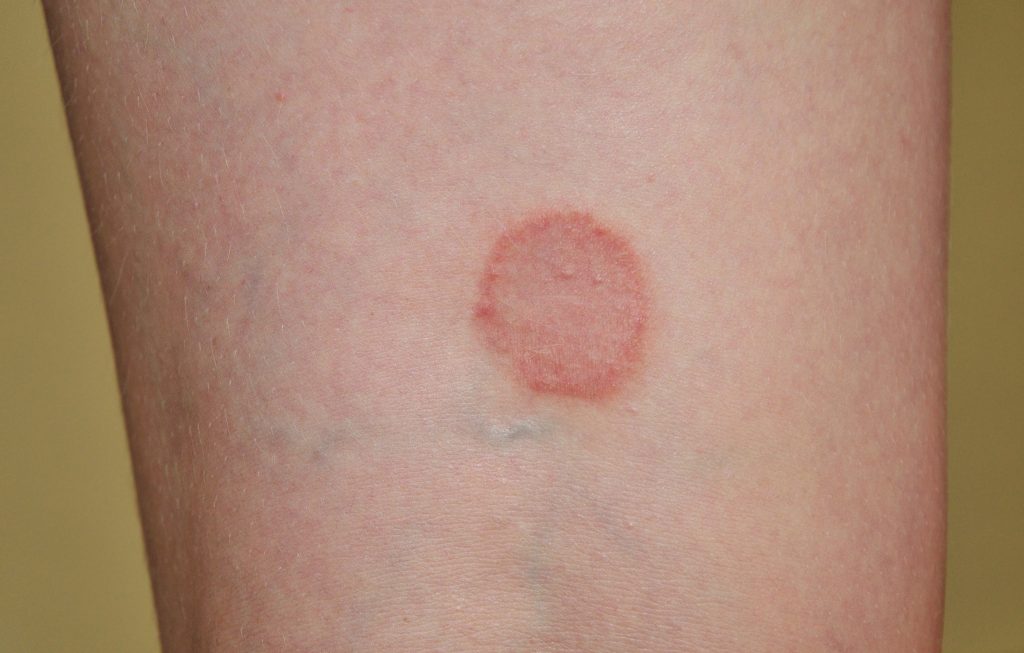
Ringworm has a reddish, circular appearance.
Rosacea is a fairly common skin condition that causes redness in your face. In some cases, it may also produce small, red, pus-filled bumps. Typically these signs and symptoms may flare up for a period of weeks to months and then diminish for a while.
Rosacea may sometimes be mistaken for acne, an allergic reaction or other skin problems. It is believed to be caused by a combination of hereditary and environmental factors.
Learn more: 4 Types of Rosacea
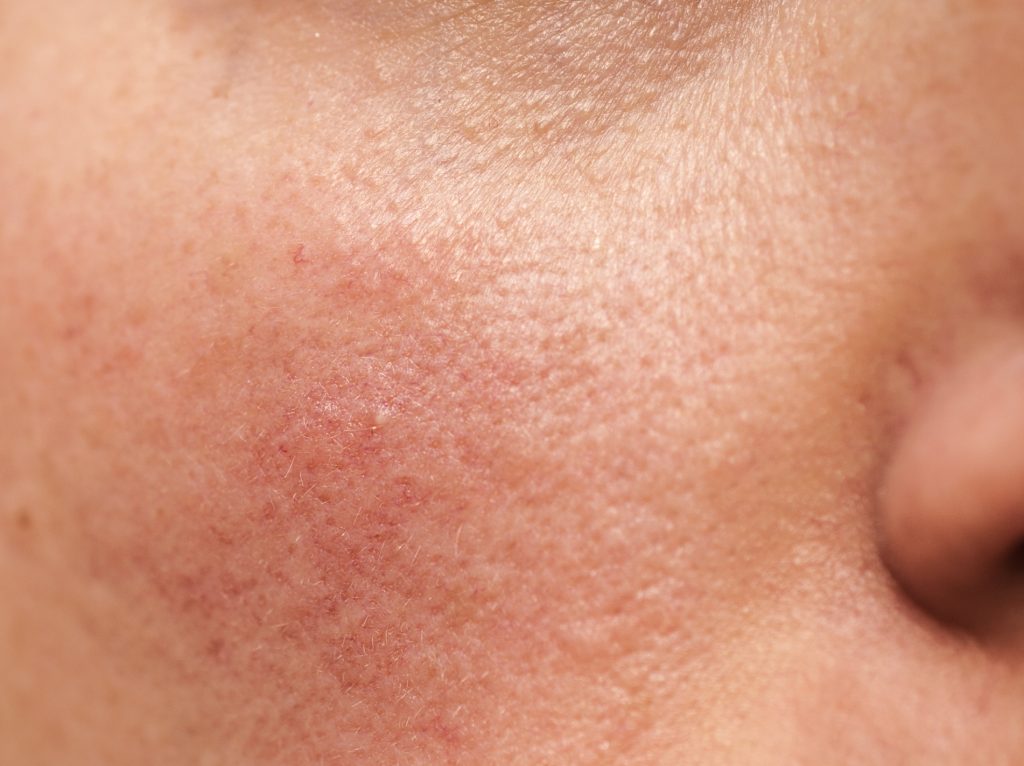
Rosacea causes redness on the face.
Sebaceous hyperplasia is a benign bump on the skin that forms as a result of over-productive oil glands. When oil glands are damaged, they can become enlarged and clogged, leading to this condition. It is primarily a cosmetic concern rather than a medical problem.
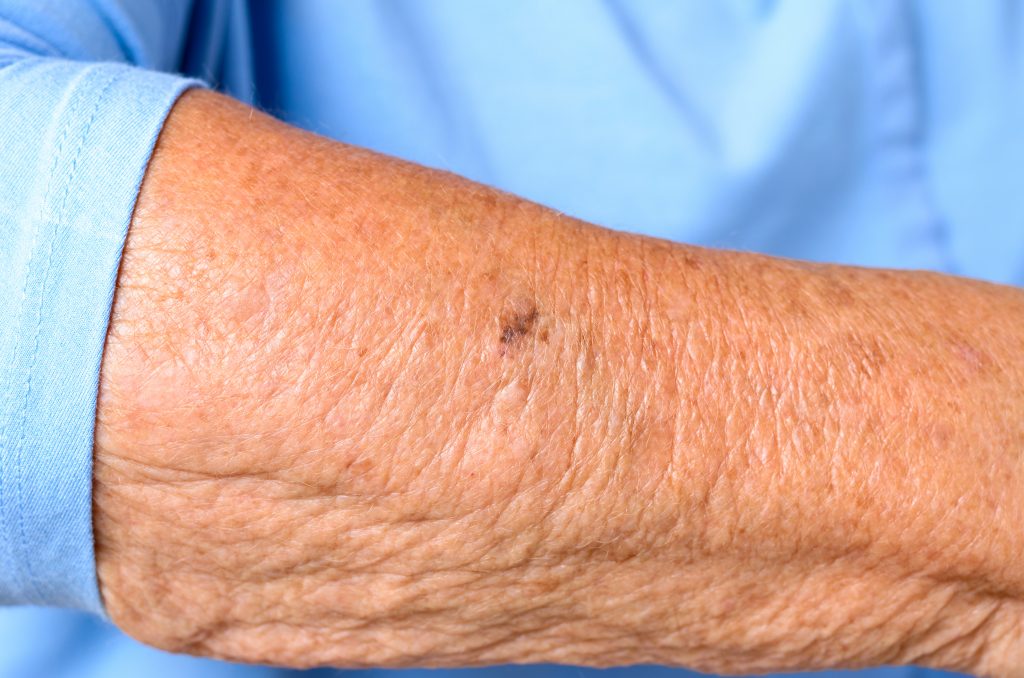
Sebaceous hyperplasia is a benign bump on the skin that forms as a result of over-productive oil glands.
Seborrheic keratosis is one of the most common noncancerous skin growths found in older adults. It most commonly appears as a brown, black or light tan growth on the face, chest, shoulders or back. Although they are not cancerous, they can look like skin cancer.
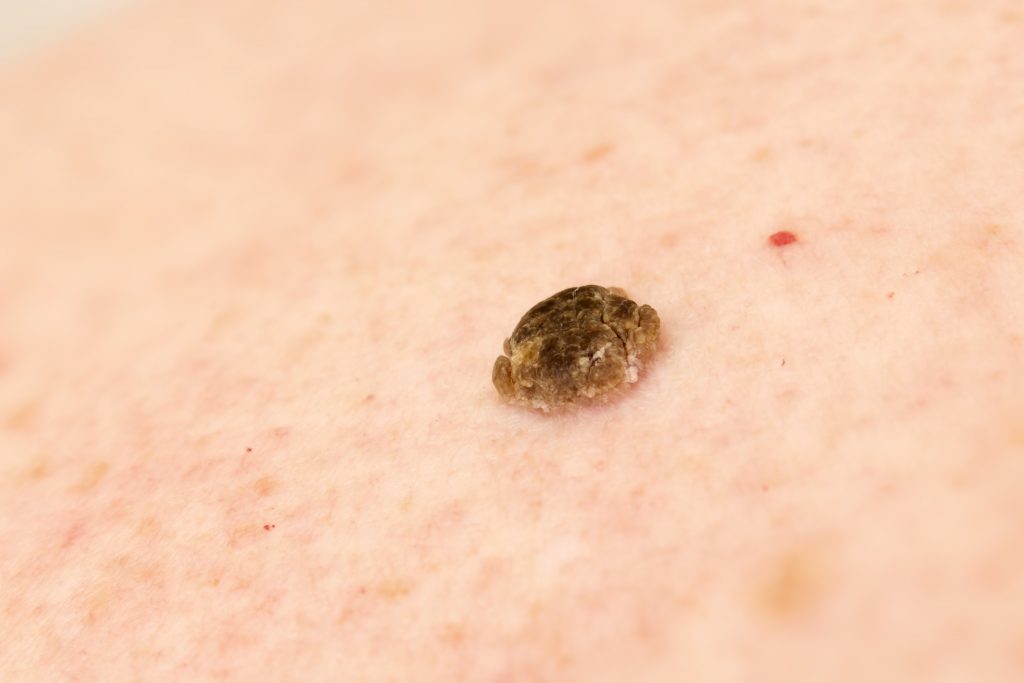
Seborrheic keratosis is also known as seborrheic verruca or a senile wart.
Shingles, also known as herpes zoster, is a painful skin rash that occurs when the virus that causes chickenpox reactivates.
Typically, shingles appears on a small area on one side of the face or body. The rash is often painful because it travels up nerve roots (which supply sensation to your skin) to the area of skin supplied by those specific nerve roots.
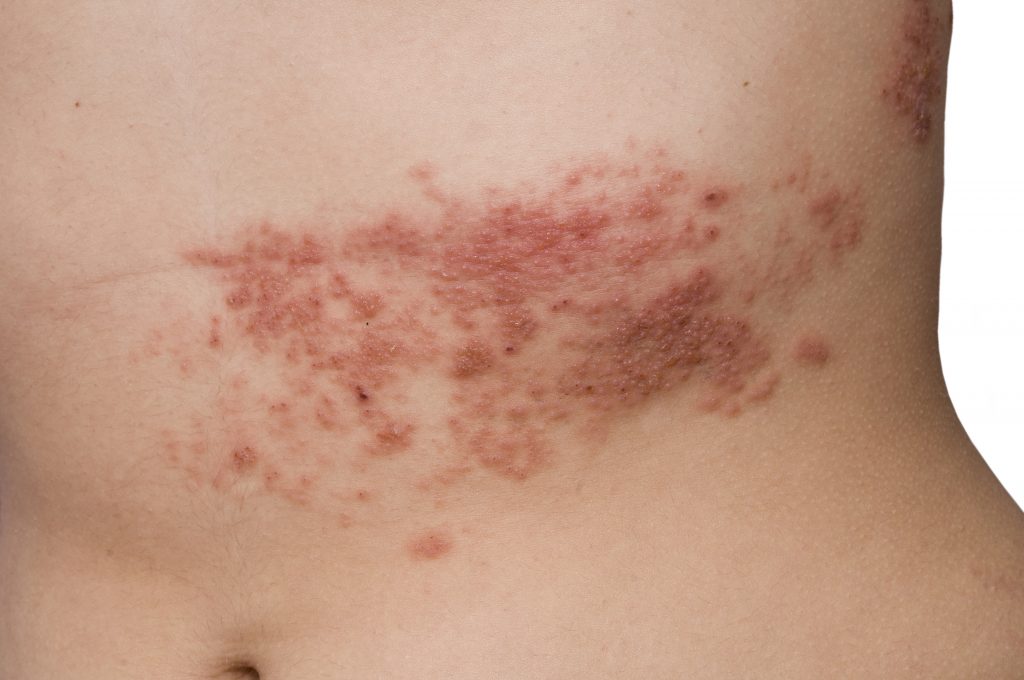
Shingles is a painful skin rash that occurs when the virus that causes chickenpox reactivates.
Skin tags are small, soft skin growths that can occur anywhere on the body but are most common on the eyelids, neck, armpits, groin folds and under the breasts. They are harmless but they can be annoying, particularly if they are in an area where they are rubbed on by clothing. They may be flesh-colored, pink or may darken.
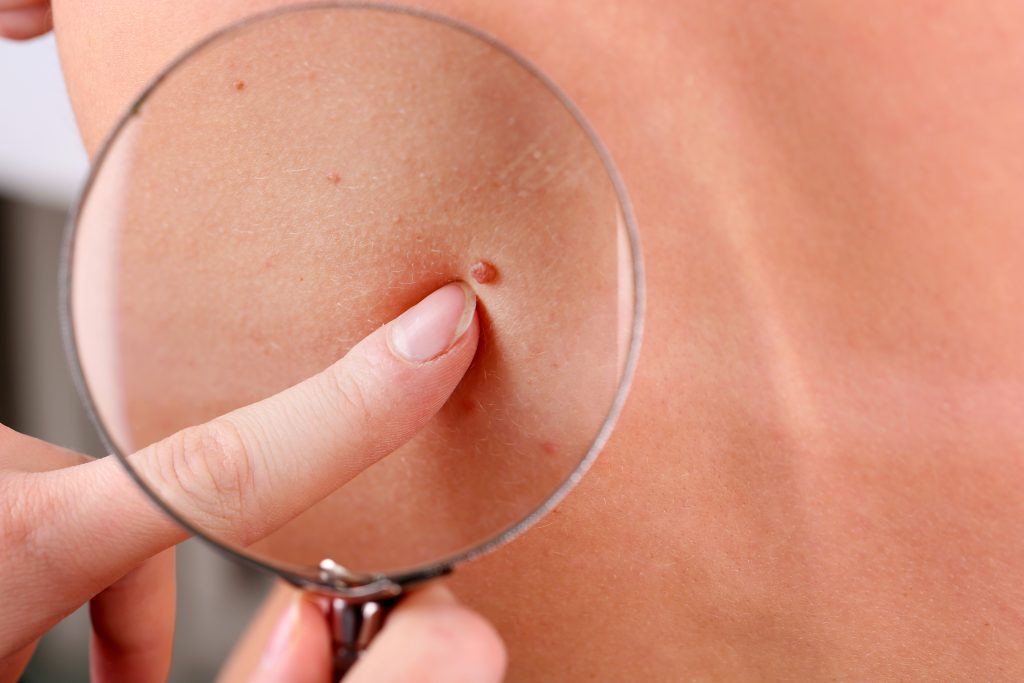
Skin tags are small, soft growths that can be skin-colored, pink, or may darken.
The sun can age and burn your skin, and it can also cause damage on the cellular level, leading to skin cancer. The good news is, the U.S. Dermatology Partners team can help you formulate a plan to prevent sun damage and repair the effects of the sun’s UV rays so that you can go out and enjoy a sunny day. Learn more on this page or contact U.S. Dermatology Partners to schedule an appointment with us.
Individuals who are prone to sunburn are thought to be genetically predisposed to skin cancer. Risk is also increased when exposure to UV rays is excessive. Sunscreen helps prevent the damaging effects of ultraviolet radiation, including skin aging and skin cancer like melanoma and squamous cell carcinoma.
Sunscreens are rated and labeled with a sun protection factor (SPF) that measures the fraction of sunburn-producing UV rays that reach the skin. The higher the SPF, the greater the protection.
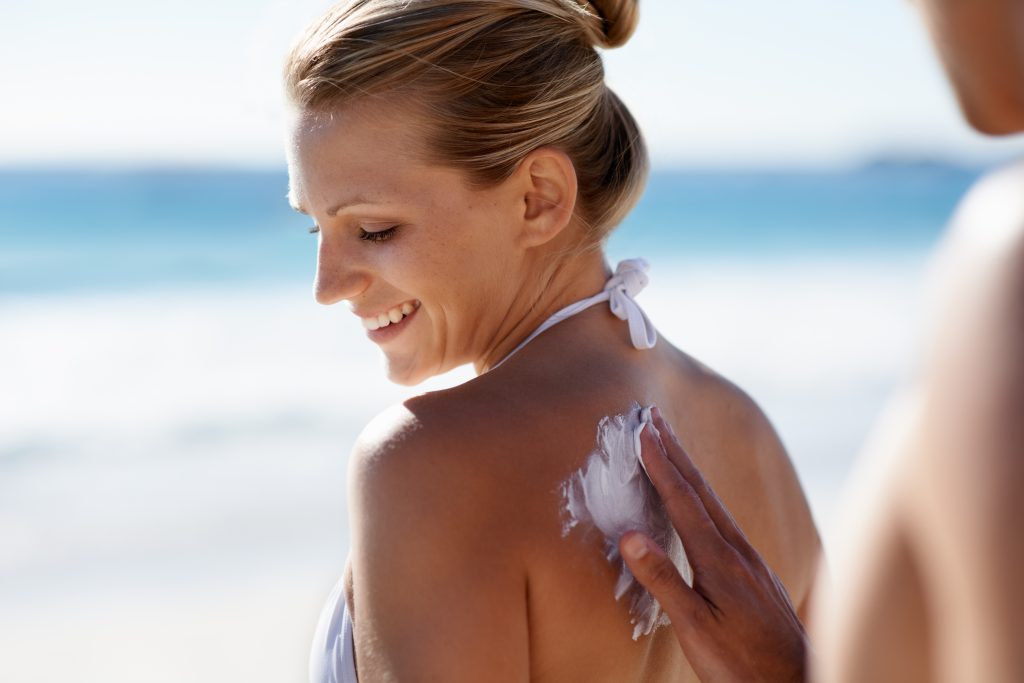
Sunscreen is a topical product that is used to reflect or absorb some of the ultraviolet rays from the sun.
Vitiligo is an autoimmune disease in which white patches of skin appear on different areas of the body. This happens when melanocytes, the cells that make pigment in the skin, are destroyed. In addition to the skin, it can affect the mucous membranes of the mouth and nose as well as the eyes. Its cause is not known.
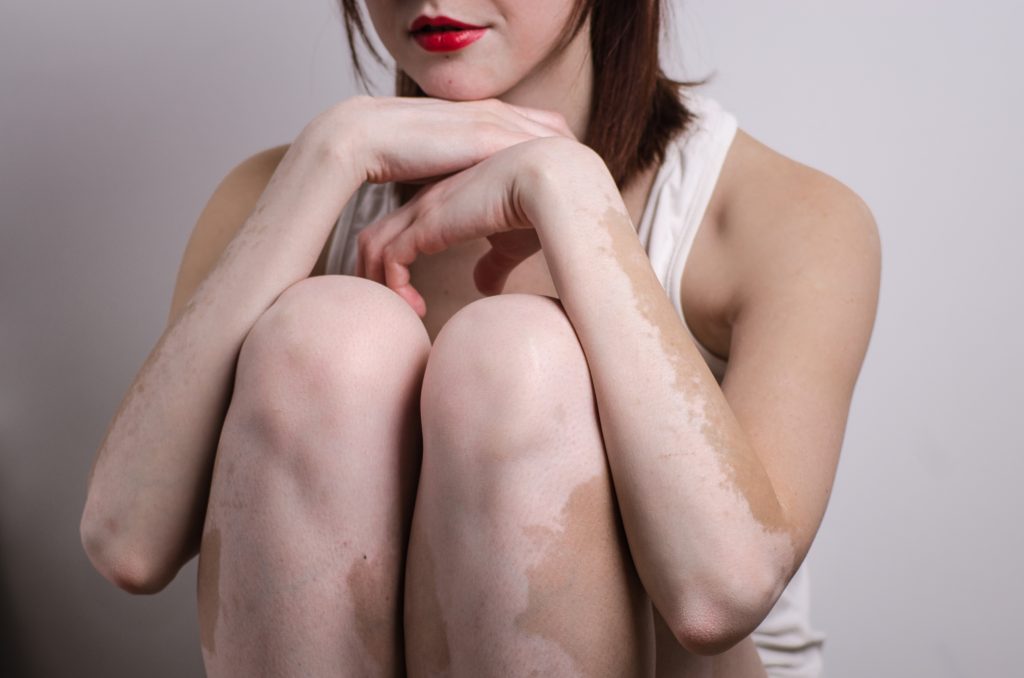
Vitiligo causes white patches on different areas of the body.
Warts are benign, non-cancerous growths that appear on the skin as the result of a virus called human papillomavirus, or HPV. They are contagious and are spread by contact – either with the wart or something that touched the wart. Cut or damaged skin is more vulnerable to warts.
Related: How to Identify a Wart
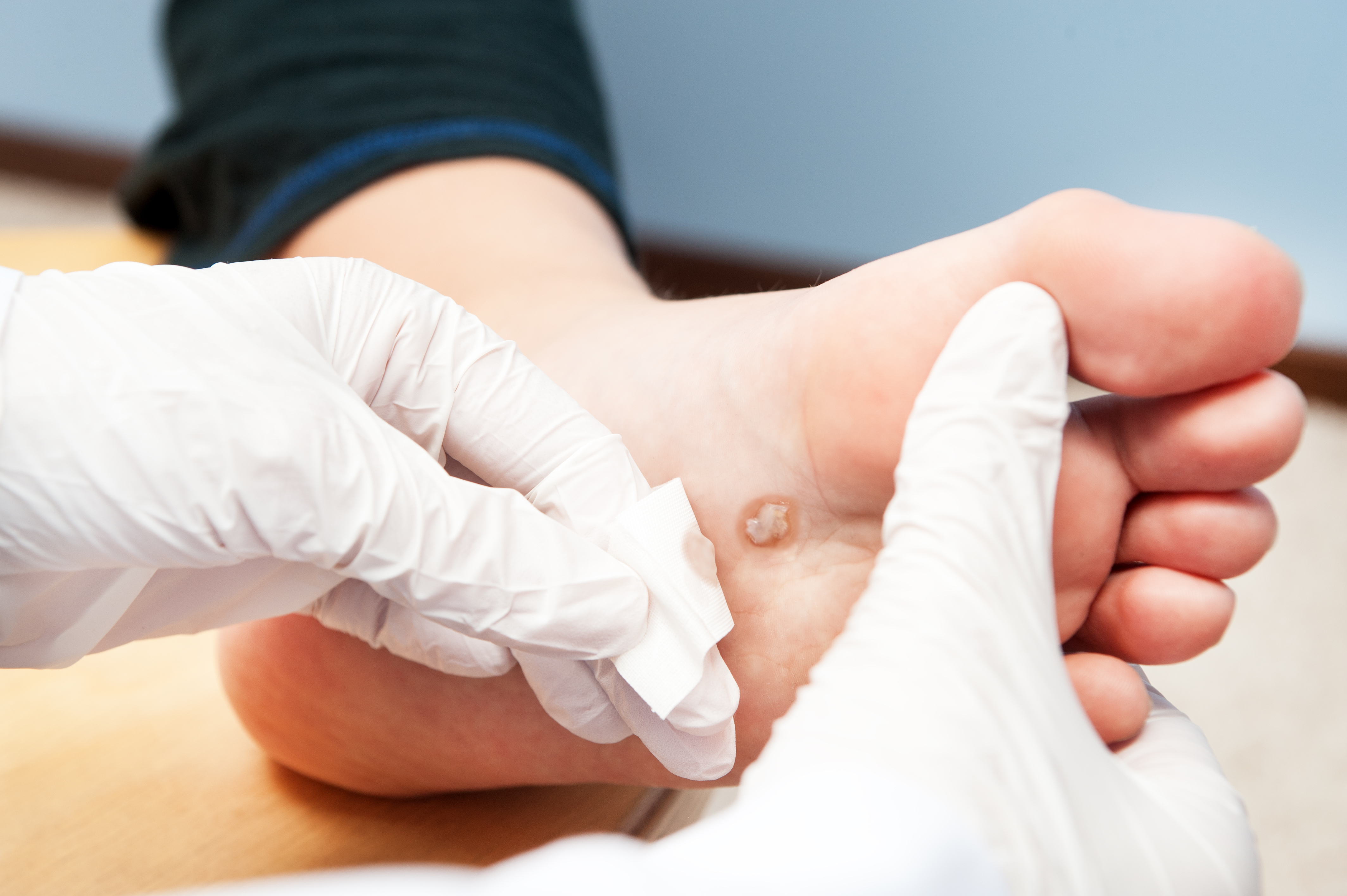
Warts are benign, non-cancerous growths that appear on the skin as the result of the human papillomavirus.
Birthmarks are common, benign skin conditions, and for the most part, their only negative effect is to mar the cosmetics appearance of the skin. If you or your child have a birthmark that causes you concern, a dermatologist can examine it to ensure it isn’t a more serious skin condition and provide treatment to remove or diminish the appearance of the birthmark. On this page, you can learn more about the different types of birthmarks and the available treatment options.
Botox, the commercial brand name for botulinum toxin (BTX), is an injectable cosmetic dermatology treatment that reduces the appearance of fine lines and wrinkles on the face.
Unlike injectable wrinkle fillers, which work by filling a crease in your skin with another substance, Botox actually relaxes targeted muscles to reduce the look of lines in the face. This results in smoother skin with a more youthful appearance.
Each Botox injection relaxes key facial areas by temporarily paralyzing specific muscles. This temporarily removes wrinkles and improves the look of laugh and frown lines, skin bands on the neck, crow’s feet, forehead creases and more.
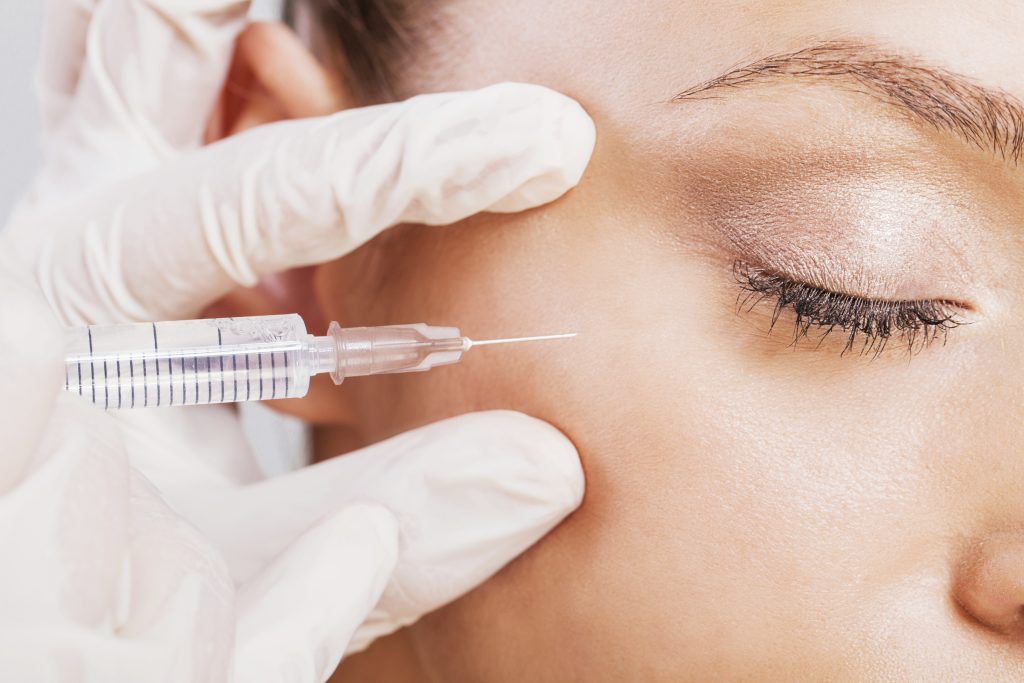
Botox is a quick procedure that is done in just minutes in your doctor’s office.
Although it was originally developed to treat eye muscle disorders, Botox has become popular cosmetically and this is now its primary use. In fact, Botox injections are now the most common cosmetic treatment in the U.S., with 6.3 million procedures done in 2013. Because Botox inhibits the release of certain neurotransmitters, it is also sometimes used to treat chronic migraines.
When it comes to dermatological treatments that will help people reclaim a youthful glow, create an even skin tone, and minimize the appearance of scars, chemical peels offer a conservative solution that addresses all of these concerns. Chemical peels are versatile treatments that help to improve the health and appearance of the skin, and just about every patient could benefit from the procedure. If you’re interested in learning more, continue reading below or get in touch with a U.S. Dermatology Partners location near you to schedule your visit.
Chemical Peels are treatments that can improve the skin’s appearance by peeling off an old layer of skin to reveal the healthy new skin below. The ingredient used in the chemical peel solution makes the skin redden, and when the skin peels off, the skin below it is smoother, healthier, and less wrinkled.
Looking to improve and recover your skin’s youthful appearance?
As we age, our skin naturally loses collagen and elasticity. At the same time, repetitive movements and expressions can create facial wrinkles. In addition to comprehensive medical procedures, dermatologists also provide a wide range of minimally-invasive, low impact treatments designed to address a number of aesthetic desires to help you look and feel your best.
While many conditions from unwanted hair and tattoos to wrinkles and rosacea may not be physically harmful, they can be uncomfortable and even cause emotional distress. Cosmetic dermatology offers a wide range of cosmetic surgery and non-surgical services focused on giving you the results you want without the pain, worry, and downtime.

Cosmetic dermatology focuses on aesthetic issues such as skin tone and overall appearance.
Loss of facial fullness and volume is one of the many age-related changes that people want to address with their dermatologist. From store-bought topical treatments to advanced dermatologic and surgical procedures, there are numerous cosmetic dermatology treatments available to help restore youthful volume. However, dermal and soft tissue fillers are often the most conservative and impactful solutions to restore volume without undergoing more invasive treatments. There are many different types of dermal and soft tissue fillers, and each one is formulated to address a specific area or issue related to volume loss. You can learn more on this page.
At U.S. Dermatology Partners we offer premier dermatology services for patients of all ages. Book your appointment today to find the best facial filler treatment for you and your skin, using our simple, online scheduling request form.
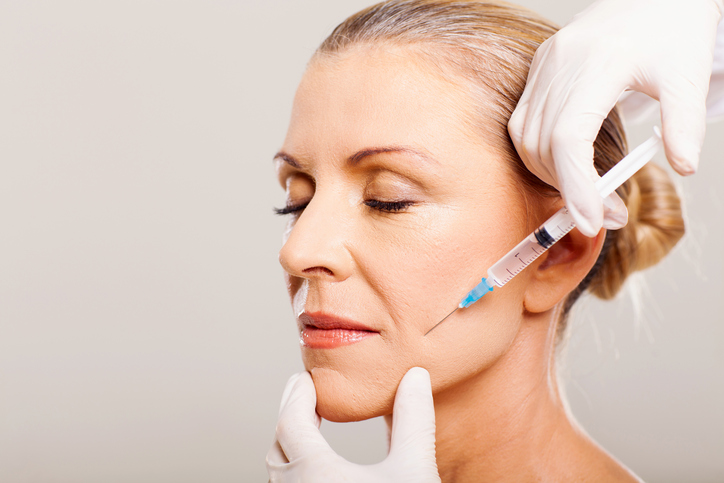
The procedure for dermal fillers can usually be done in less than an hour.
Dermaplaning is a safe and effective physical exfoliation procedure that triggers cell regeneration and allows products to better penetrate the skin. Dermaplaning is considered excellent for ridding the face of excess fine hairs which can often accumulate dirt and oil.
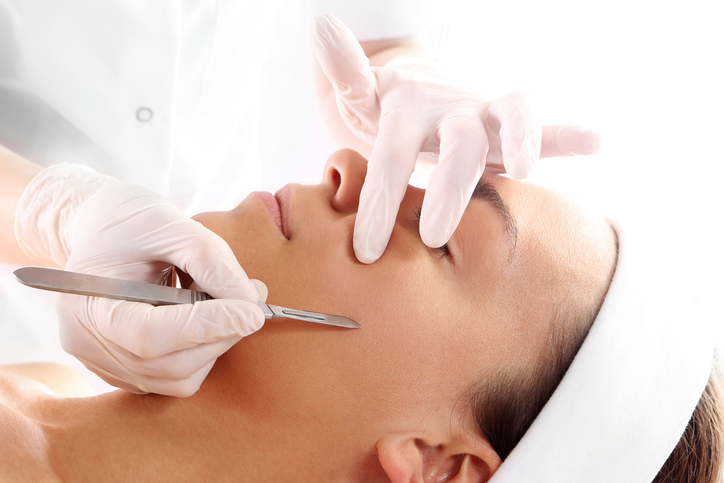
Dermaplaning is a form of physical skin exfoliation that helps the skin appear younger, healthier and more vibrant.
Dysport is a prescription injection used for the temporary improvement in severe frown lines between the eyebrows. As the muscles relax and prevent contractions, wrinkles in and around the brow and frown area will disappear.
Dysport, also known as Reloxin, is made from a neurotoxin produced by the bacterium Clostridium botulinum; it is the same neurotoxin used in BOTOX Cosmetic.
Fractional RF with Pixel8 is an innovative non-surgical way to achieve skin tightening and smoothening through the precise delivery of radiofrequency (RF) energy. By adjusting the amount of energy, depth, and areas of treatment, Fractional RF can be customized to improve the appearance of the skin by reducing skin laxity, fine lines, wrinkles, pore size, rough or pebbly texture (“solar elastosis”), stretch marks (“striae”), and scars, including surgical scars and acne scars.
Jeuveau (pronounced Jū vō) is a new way of tackling frown lines between the eyebrows that tell the stories of your years of smiling, squinting, concentrating, and yes, even frowning. The story of our lives may be written on our faces in the form of fine lines and wrinkles, but it doesn’t have to stay that way thanks to Jeuveau. If you’re ready to look and feel your very best, it’s time to sit down for a consultation with one of our knowledgeable dermatology professionals. Our teams are dedicated to offering the latest and most effective treatment options for any dermatological need to ensure your skin’s health and vitality for life.
Juvederm is a group of injectable dermal filler gels made from hyaluronic acid and used to correct for moderate to severe facial wrinkles and folds or to provide contour. Different types of Juvederm are:
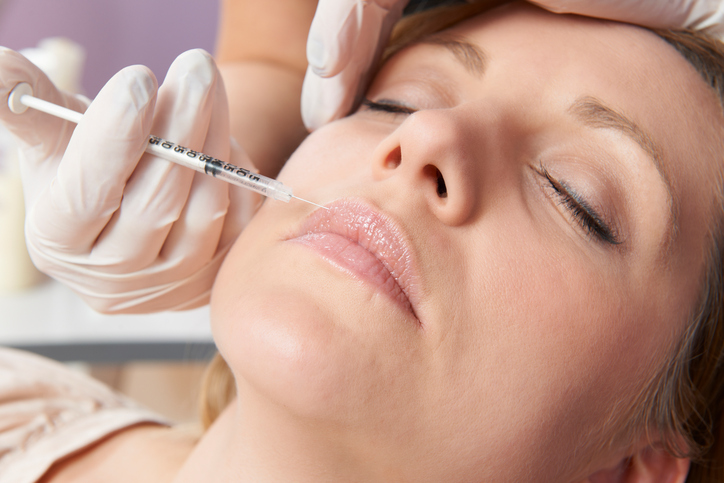
Juvederm is delivered via injection.
Keloids are raised, red scars created by excessive healing of skin wounds, such as burns, cuts and acne. They are the result of an overproduction of collagen as the skin tries to repair itself. Keloids also can occur after piercings, tattoos or surgery and often times are itchy and painful. They can grow for years and sometimes show up three months or longer after the injury occurred.
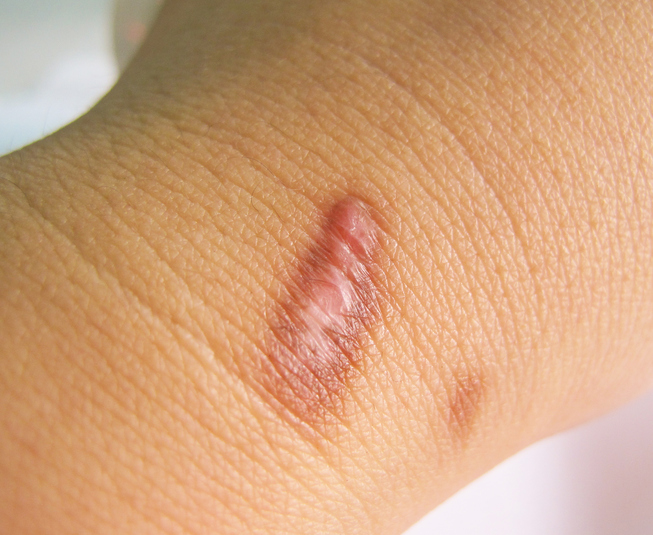
Keloid are caused by an overproduction of collagen as the skin tries to repair itself.
Keratosis pilaris is a common skin condition characterized by small, hard bumps that may make your skin feel like sandpaper. Most often they appear on your upper arms, thighs and buttocks, and sometimes are accompanied by redness or swelling. In some cases they may appear on your face.
It is caused by a buildup of keratin, a protein that protects skin from infections. When a buildup forms, it blocks the opening of a hair follicle and creates the bumps, but doctors don’t know what triggers the buildup.
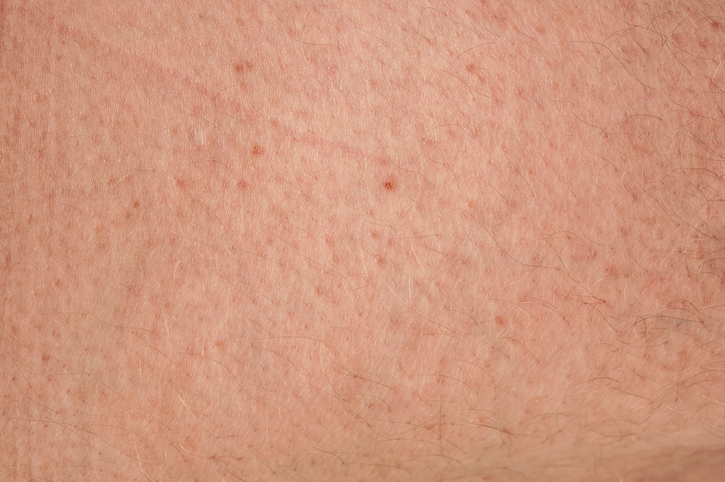
Keratosis pilaris, a condition where keratin overproduction causes clogged pores, can lead to red bumps and irritation on the skin.
Kybella is an injected treatment that targets fat stores below the chin (double chin). It is one of the best available, non-surgical treatments for double chin, and the knowledgeable dermatologists at U.S. Dermatology Partners are proud to offer this minimally invasive cosmetic dermatology option for our patients who are interested in improving the appearance of their jaw and facial structure without undergoing unnecessarily invasive surgical interventions. If you’re interested in learning more about Kybella, please take a few moments to fill out our appointment request form to schedule a consultation. One of our team members at the office nearest you will be in touch to discuss the details of your visit.
Laser rosacea therapy is a way to treat a rosacea complexion. One of the most common and effective treatments is the pulsed dye laser (PDL), which targets visible blood vessels and can reduce redness and flushing by destroying the lining of the inflamed blood vessels.

Rosacea on facial skin is treatable with laser rosacea therapy.
Laser skin resurfacing is a treatment used to reduce facial wrinkles and skin conditions including acne, scars, warts, enlarged glands on the nose and more.
The process vaporizes the upper layers of skin, which creates a wound that encourages the body to produce new collagen. The collagen and elastic fibers tighten as they heal, and the tightened skin eliminates wrinkles as it pulls together.
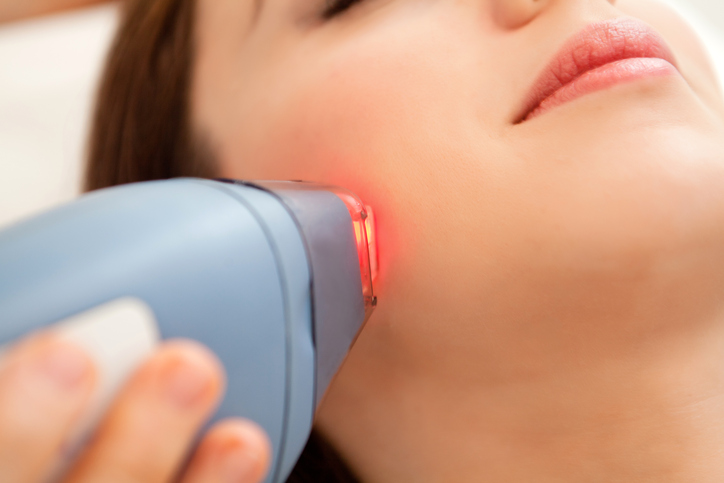
Laser skin resurfacing reduces facial wrinkles and treats skin conditions.
Laser treatments work by using specific wavelengths of light to interact with tissue, which can positively affect pigment, blood vessels, hair follicles and moisture in the skin. The result is improved skin tone and texture, as well as the tightening of loose skin.
Lasers can also be tuned to very specific frequencies to perform different tasks and can even be used in surgery to allow doctors to work on a very precise area with less pain, swelling and scarring than traditional surgery.
Cosmetically, lasers can be used for skin resurfacing and to treat such things as acne, wrinkles, rosacea and more.
Laser vein reduction uses light focused on a specific area to break up broken blood vessels. This allows them to be absorbed back into the body. It is most often used for eliminating spider veins.
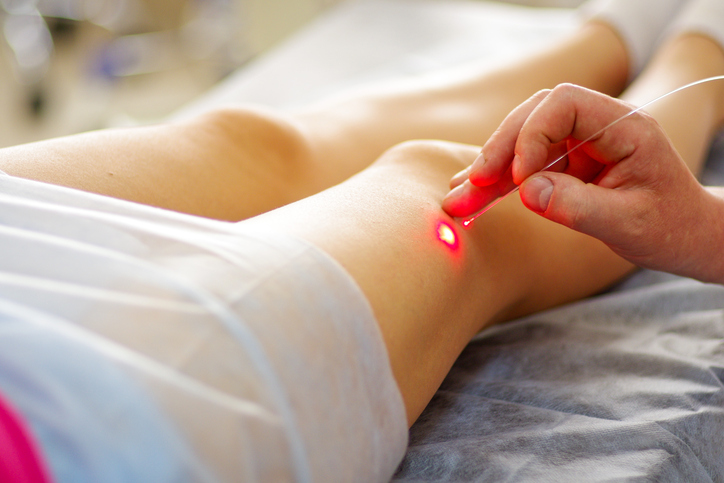
Vein laser treatment breaks up broken blood vessels.
Latisse is a product designed to help grow eyelashes and has been on the market since earning FDA approval in December 2008. It is designed to help grow longer, lusher eyelashes and is available only by prescription.
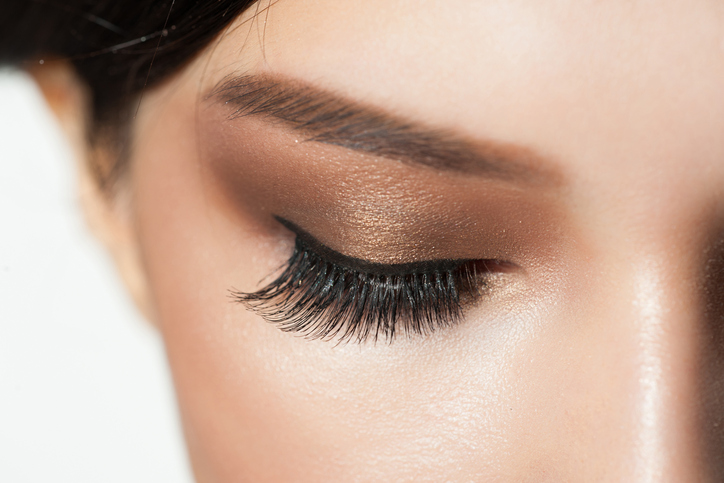
Latisse eyelash enhancement helps eyelashes to grow longer and lusher.
Platelet-rich plasma therapy, or PRP, is a non-surgical method of skin rejuvenation that uses your own blood to improve the appearance of facial tissue.
Recent research has shown that PRP is also effective at treating alopecia.
ProFractional therapy uses a laser to create small, microspherical holes in the surface of your skin to “aerate” or thicken your tissue and stimulate natural collagen growth. It is similar to the Fraxel treatment and is used for treating lines and wrinkles, loose skin, scars and depleted collagen.
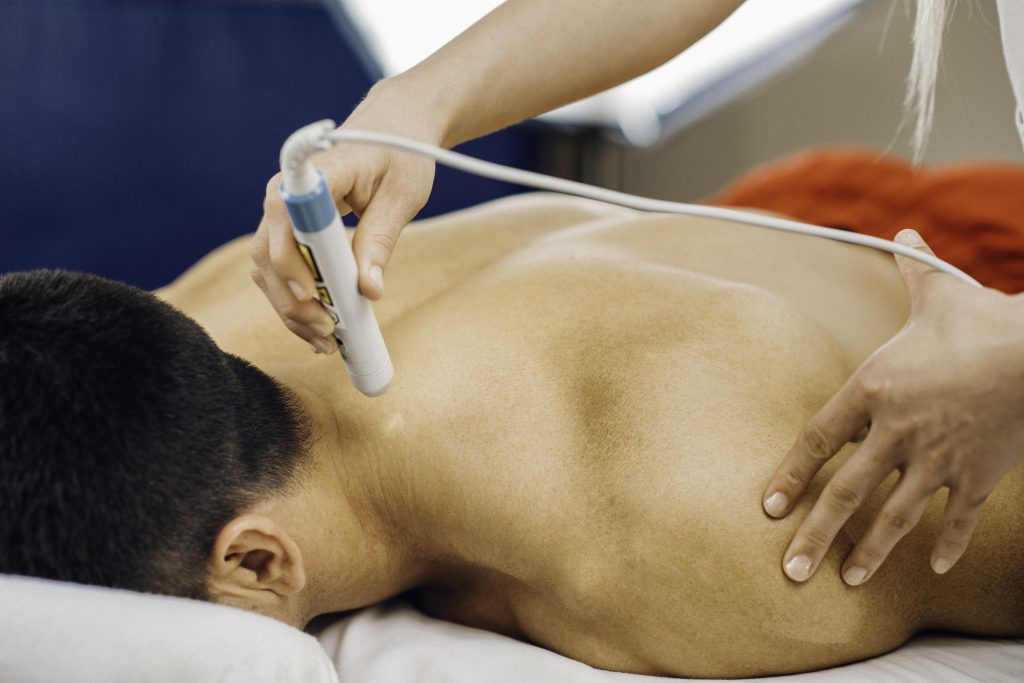
ProFractional therapy uses a laser to create small, microspherical holes in the surface of your skin to “aerate” or thicken your tissue and stimulate natural collagen growth.
At U.S. Dermatology Partners, our board-certified dermatologists utilize a range of treatment options to help our clients achieve healthier, more beautiful skin. Among these are dermal fillers, a great option to improve the appearance of fine lines, wrinkles, and sagging skin. There are many different dermal fillers available, and each has its own, unique advantages. RADIESSE dermal filler injections from U.S. Dermatology Partners are an innovative treatment option. Due to the long-lasting results, RADIESSE has quickly become one of the most popular filler options available. You can learn more on this page, and don’t hesitate to call the U.S. Dermatology Partners team near your home or office to schedule a cosmetic dermatology consultation. Book your appointment today to find the best cosmetic dermatology treatment for you and your skin.
RADIESSE is an injectable dermal filler used to plump the skin. When age or scarring causes fine lines, wrinkles, or sagging, RADIESSE dermal fillers can be injected below the skin to restore volume and smooth, youthful fullness. Each type of dermal filler is uniquely formulated to address specific concerns. RADIESSE’s formula uses a water-based gel with calcium-based microspheres to recreate lost volume, with non-toxic and non-allergenic ingredients. Because the components of RADIESSE’s formula are very similar to naturally-occurring minerals, people are much less likely to experience an allergic response. Over time, the body absorbs the filler material, but unlike traditional dermal fillers that need to be immediately readministered to maintain the desired results after they’re absorbed, RADIESSE dermal filler treatment is also designed to spark the production of your body’s natural collagen, meaning you’ll retain your improved appearance for even longer before you need retreatment.
While most people select RADIESSE for use improving the appearance of the face, specifically the skin around the nose and mouth, it is also used to restore volume on the backs of hands, and it can sometimes be administered as an alternative to implant surgery in the nose, cheeks, or chin.
Restylane is an injectable dermal filler gel made from hyaluronic acid to produce volume and fullness in the skin. This reduces the appearance of wrinkles and can also create fullness in the lips.
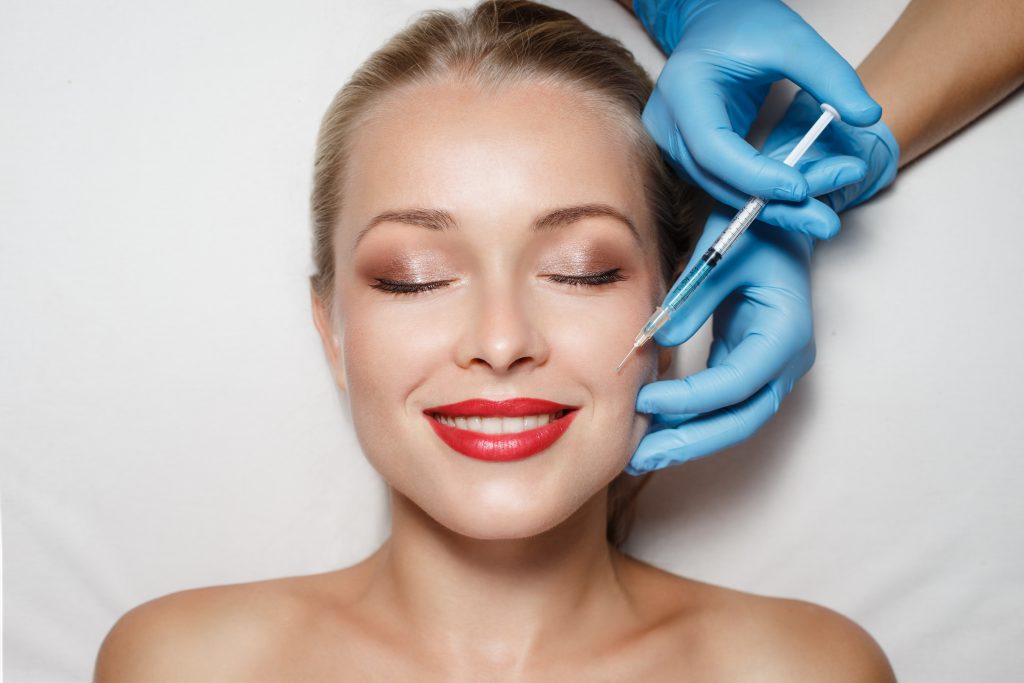
Restalyne helps smooth away wrinkles and fine lines.
We all want healthy, beautiful skin. But scars, a natural part of the healing process, leave a lasting mark and cause some people to struggle with the negative impact on the appearance of their skin and in some cases, limitations in function or other concerns. If you’re unhappy with the appearance, texture, or health of your skin after an injury, surgery, or other damage that leads to scarring, the U.S. Dermatology Partners team can offer treatment to improve the appearance of scarring.
Sclerotherapy is an outpatient procedure performed by a board-certified dermatologist. It is used to treat varicose and spider veins in the legs. Sclerotherapy involves injecting a solution directly into the vein. The solution irritates the lining of the blood vessel, causing it to close when compression is applied.
Sculptra is an FDA-approved synthetic injectable used to correct shallow to deep facial wrinkles and folds. It is also a collagen stimulator that helps revitalize your body’s own collagen production.
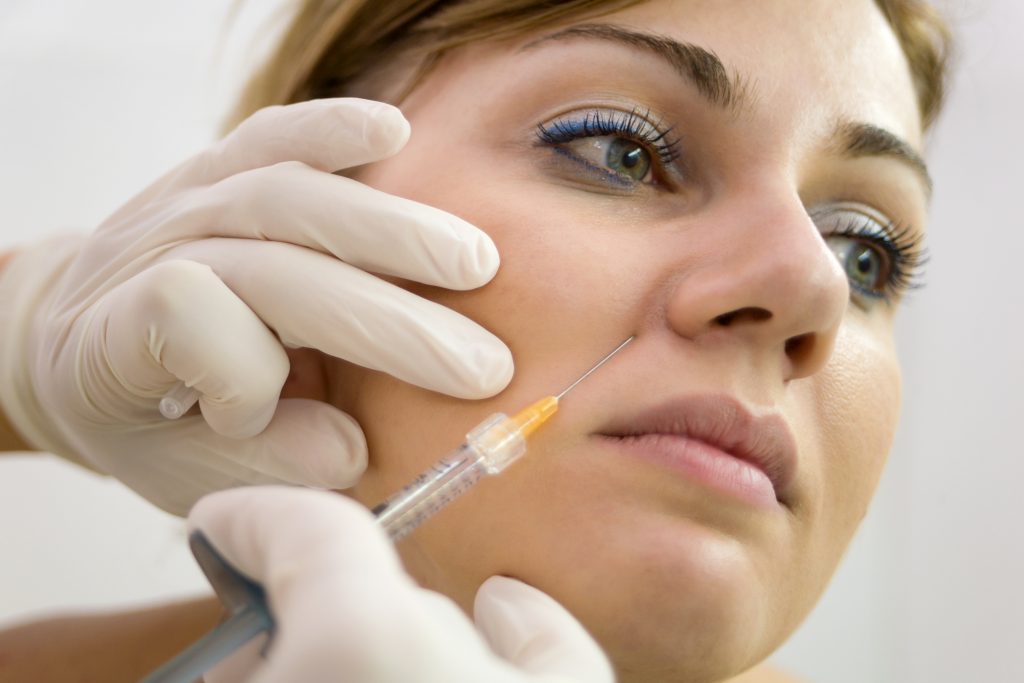
Sculptra corrects deep facial wrinkles and folds.
Skin lightening is a process used for people who want to lighten certain areas of skin that are affected by such things as melasma, age spots or even freckles.

Skin lightening can help provide a smooth, even skin tone.
Spider veins are blood vessels that are visibly enlarged and can be seen on the face as well as other areas of the body, most commonly the legs. They may also be called broken blood vessels or thread veins, and appear as hairline marks that can be red, bluish or purple. They most often appear on the nose, chin or cheeks.
Broken blood vessels occur when the skin has been damaged. They are often caused by falls or accidents that caused bruising, or by scrubbing the face too vigorously. However, spider veins also can be caused by such factors as aging, pregnancy, estrogen replacement therapy, sun damage and rosacea. In the legs, they may be caused or worsened by standing or sitting for long periods of time, obesity and constipation.
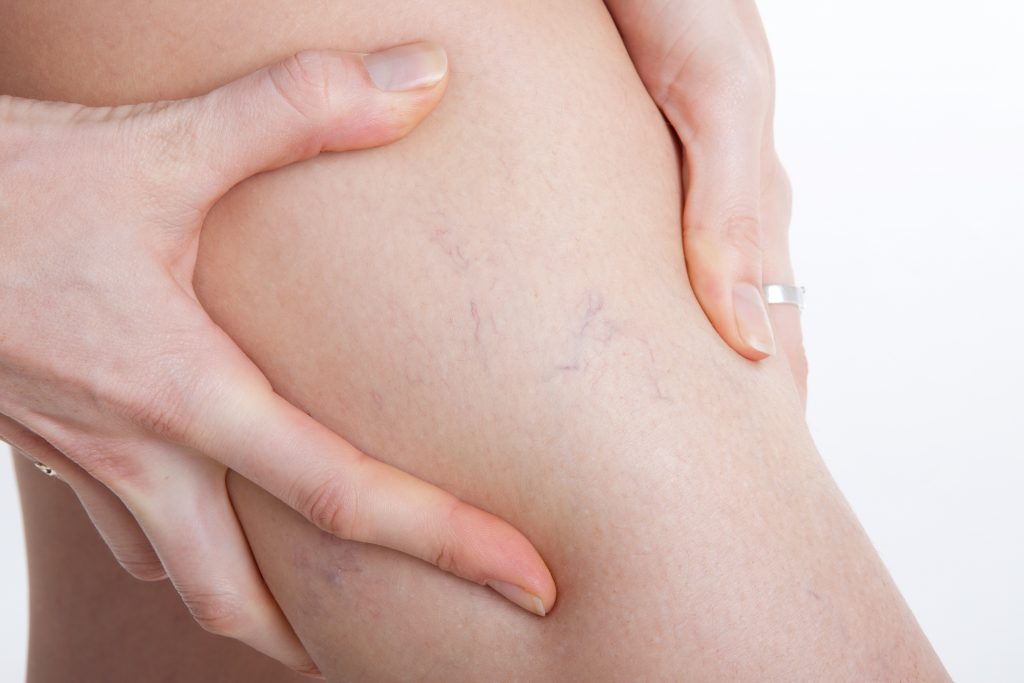
Spider veins are visibly enlarged blood vessels.
Varicose veins are bulging, bluish veins that look like cords running under your skin and are typically found in the legs and feet. Swollen and twisted veins are considered superficial varicose veins. Although they are usually harmless, they often are painful and can become disfiguring. If they become inflamed, they will be tender to the touch and may prevent proper circulation.
When circulation is affected, it can cause such things as swollen ankles, aching legs and itchy skin.
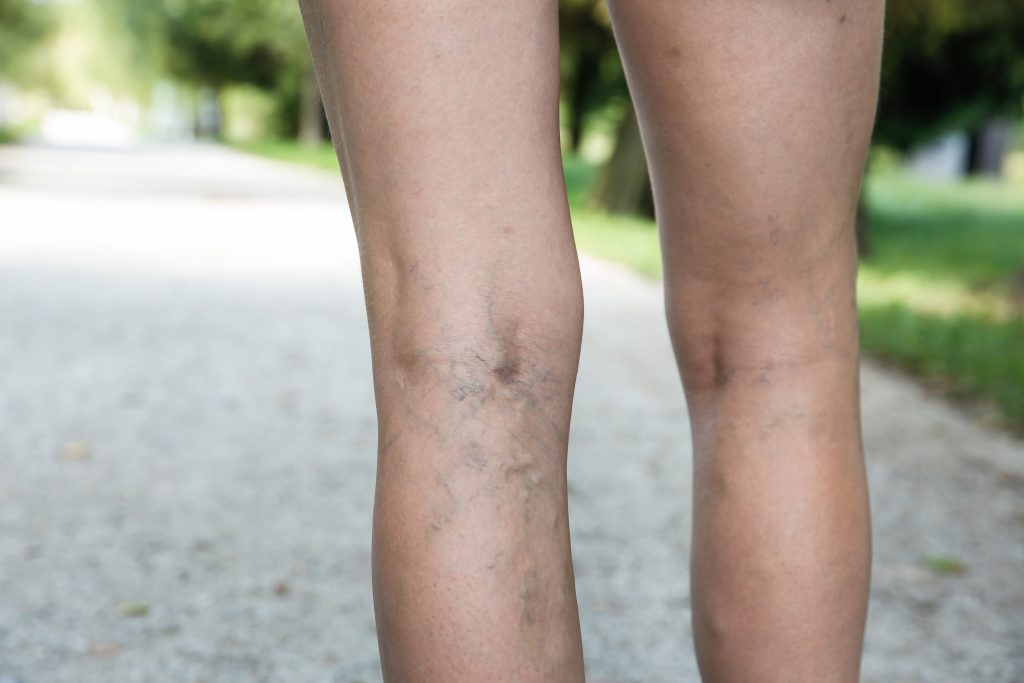
Varicose veins are bulging, bluish veins that look like cords running under your skin and are typically found in the legs and feet.

